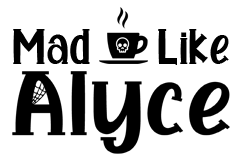There is a serious problem in this country relating the wildly out of control medical and insurance costs. I don’t have a solution, and even if I did, I wouldn’t have the first idea how to implement it. I do know that the cost of medical care is reaching an absurd level. This is a bit of a long rant, so strap in!
What I do see happening is that the two industries (medical providers and insurance providers) seem to be feeding one another, and subsequently are inflating prices. Because insurance companies pay such a significant amounts, medical providers charge an insane amount of money for services, knowing that only a small portion of this will be passed along to the patient. I have had past surgical establishments charge for multiple doctors on the initial bill, and write off all but one of the surgeons once the insurance had been paid. I have had doctors recommend that I discontinue physical therapy because they bill way to much to afford it without insurance.
They build this into the system, increasing their prices to get more out of the insurance companies, who in turn increase the cost of medical coverage. It has gotten so absurd that a friend discovered that it would be cheaper in the course of a year for her and her husband to pay for a divorce and be covered separately than it would to carry health coverage together as a couple.
So why is this topic fresh on my mind?
Happy 26th Birthday!
I just passed my 26th Birthday and I have officially cut the final cord to my parents… and lost my insurance. When you have a chronic illness, this is a BIG DEAL. In the past 3 years, I have hit my max out of pocket on my insurance (Usually by July, and one year by the end of January) and still shelled out between $6K in medical bills annually, which equates to roughly 20-21% of my total income. That and I had GREAT insurance through my dad’s plan, something I am going to miss greatly.
Now I am lucky enough that I have a job that also has a good medical plan, and was even luckier to have the (almost invisible) wiggle room in my budget to purchase a short term plan for the time I am without coverage. Without thinking, I planned my trip to the Pine Ridge reservation during the week I was going to be insurance free (EEP!), and all I kept thinking about were breaking my ankles in a prairie dog hole, getting bitten by a rattlesnake, or getting in an accident. Needless to say, my anxiety wouldn’t be able to take being uninsured!
While I know that there is a very slight chance of anything happening that would cause me to use this medical plan, the $120 for a backup insurance plan was well worth the peace of mind. Because even stitches cost $400 and up without insurance. My recent X-ray just to make sure my ankle wasn’t broken (it wasn’t) was $300 before insurance paid on it. I can’t imagine what anything more serious would do to my finances.
Insurance as the Gateway to Medical Attention
But the frustration I have with this whole thing is that for many, their insurance still doesn’t cover care that would change or even save their life. A woman I went to the PRC with at the Mayo Clinic needed a specific infusion to help rectify her terrifyingly low platelet count, and her insurance wouldn’t pay for it, claiming she had this infusion too recently. Even though she was on bed rest and barely able to care for herself and much less her children, she couldn’t get this care until she was able to afford it. Another woman’s husband has a job where he works overseas for long periods of time to just make enough money to support their family and float her medical bills.
The Sticker Shock of Medical Care
In my own personal story, I have been floored by the costs associated with my care quite few times in my medical history. When I was 21, I knew that the amount of Vicodin I was taking on a daily basis to manage the pain was increasing in a terrifying way, and needed to stop the cycle before I had a much worse problem to deal with. The doctor knew of a similar pain medication that had far less addicting qualities, and I had been taking it for a few months with great success and no increases. My dad’s insurance was messed up through his HR department for about 4 to 5 days at one point, and I had to purchase this medication without insurance. I expected the bill to be over $100. I did not expect the bill to be just shy of $500! The pharmacist offered to contact my doctor and have him change the prescription to Vicodin for a few days which would have dramatically reduced the price, but since I would be able to be reimbursed for the cost once the insurance went through, I stuck to my guns.
What amazes me is that the more dangerous of the two medications was far more affordable. What frightens me is how lucky I was to have the means of getting the right meds. My dad had a credit card for emergencies that I was able to use for the transaction. But without it…. I was just a broke college student. Even the Vicodin would have put a severe pinch on my current finances and may have still been out of reach, seeing as my bank account often did not crest into the triple digits. If I hadn’t had my dad’s card… I might have been out of my medication for days. Even now having been free of pain meds for going on 4 years, this gives me a flutter of horror. At that time, I would panic if I left the house to get groceries without having my meds in my purse, much less knowing that I would be OUT for an undetermined number of days.
Insurance helps and hurts
One of the most important keys to living a better life with any chronic condition is getting the medical help you need. With the rising costs of medical services, the hefty charge for medical insurance (and not always even good insurance) and the high likelyhood that those with chronic conditions may be struggling to work full time, it can lead to a quick financial downward spiral. And along with it goes your physical health.
For me, my insurance has been the key to a better life, and I will be forever grateful that I had the opportunities afforded to me that I did. I was able to go to the Mayo Clinic and go through the PRC program, getting me off of pharmaceutical drugs and able to see my life clearly for the first time in years. It allowed me to get the physical therapy, MRI’s, injections, and multiple surgeries I have had in the last 2 years alone. Because I was lucky enough to have good insurance, I was able to have a much better quality of life than I ever dreamed I could ever have again. Accomplish things that I thought would never be options in the hand I had been delt. But some people are not that lucky.
A seemingly hopeless situation
The one thing that blows my mind is that insurances will refuse some people medical care that could potentially change their lives in a way that radically reduces their overall need for medical care.
My trip to the Mayo cost $30,000, of which my Insurance bore the majority of the burden. Because of this, it cut the medical costs from my chronic pain down by over 85% monthly. But here is the catch. There are only X number of openings in the PRC, and I waited 3 months just to be accepted, and another 8 months for my actual treatment to start. There are other similar programs, one within 100 miles of Mayo, but since they were not affiliated with a hospital, my insurance would not cover it.
There are countless other people who could benefit from a program like this that find themselves in a similar situation, where they wait well over a year to get into a program that is covered, or they simply never have this option due to coverage issues.
Cost Analysis of Preventative Medicine vs. Ongoing Medical Care
Personally, the PRC was the key that allowed me to get a full time job, get off of medication, and start rebuilding my life. The fact that insurance was far more willing to pay for medications than rehabilitation programs was surprising to me, and I decided to dig into the rough costs associated with my own treatment for a 3 year period just to see what the numbers showed.
*Disclaimer: These are general costs gathered from various sources on the internet, and may not be the actual costs of medications either at that time or today as much has changed in terms of generics, etc. It is simply a representation of the point I am trying to make, and I attempted to get these numbers to be as close to what they actually were without hunting down actual bills, statements, and medical records. This is not what I paid, but what I estimate costs were before any insurance, co-pays, etc. were completed.
I tracked down the pre-insurance cost for the 7 main medications I was taking at the time to manage my pain, factored in chiropractic benefits paid (divided by 12 months), averaged 2 doctor appointments a month, and usually received a steroid injection once about every 2 months. The total of just the monthly costs came to roughly $1,300 each month.
This means the maintenance each year for my condition (not including any diagnostics and adding an average of 2 ER visits per year) came to $16,600 a year. I have now been off of all of these medications for 3.5 years. This means that the treatment I received at the PRC has saved my insurance company $28,100 and counting… after deducting the initial treatment costs from the amount saved.
(Annual Cost $16,600) X (3.5 years) = $58,100
(Cost savings to date $58,100) – (PRC Treatment $30,000) = $28,100 saved after initial treatment cost.
And if you are balking at the out of pocket costs of a treatment facility, consider this. If you have a $5,000 max out of pocket and that number scares you, just look at your percentage of other medical costs. Looking at my 16,600 per year in maintenance costs X 20% (assuming your insurance covers 80% after a deductible), you would still face $3320 per year, and this doesn’t consider all of the additional money spent on massage, counseling, chiropractic beyond your benefits, over the counter medications, and any additional diagnostics. In just 2 years, you will have spent more than the initial $5K. It may take a while to pay it off, but in the long run (for instance, 3.5 years) you will have saved $6,620.
(cost to you per year $3320) x (3.5 years) = $11,620 total savings
($11,620 total savings) – ($5,000 max out of pocket for treatment) = $6,620 saved after initial treatment over 3.5 years.
So just after 3 years, the numbers show a staggering savings to the insurance company alone, and I cannot begin to understand why there isn’t a greater push towards providing this type of care. It doesn’t always work for everyone, sure. But it does help people get off these medications, and there will still be a reduced overall cost to the insurance company long term. Because with chronic pain, you have to think long term. And long term, this treatment could improve someone’s life, or even save it.
Make Your Health Your #1 Priority
So what is the answer? Honestly, I haven’t got one. But if you are suffering from chronic pain and considering a treatment facility, push to find all of the options around you and to get into a facility your insurance will cover. The costs to you are more than worth it,





 Hi! I'm Alyce.
Hi! I'm Alyce. 




